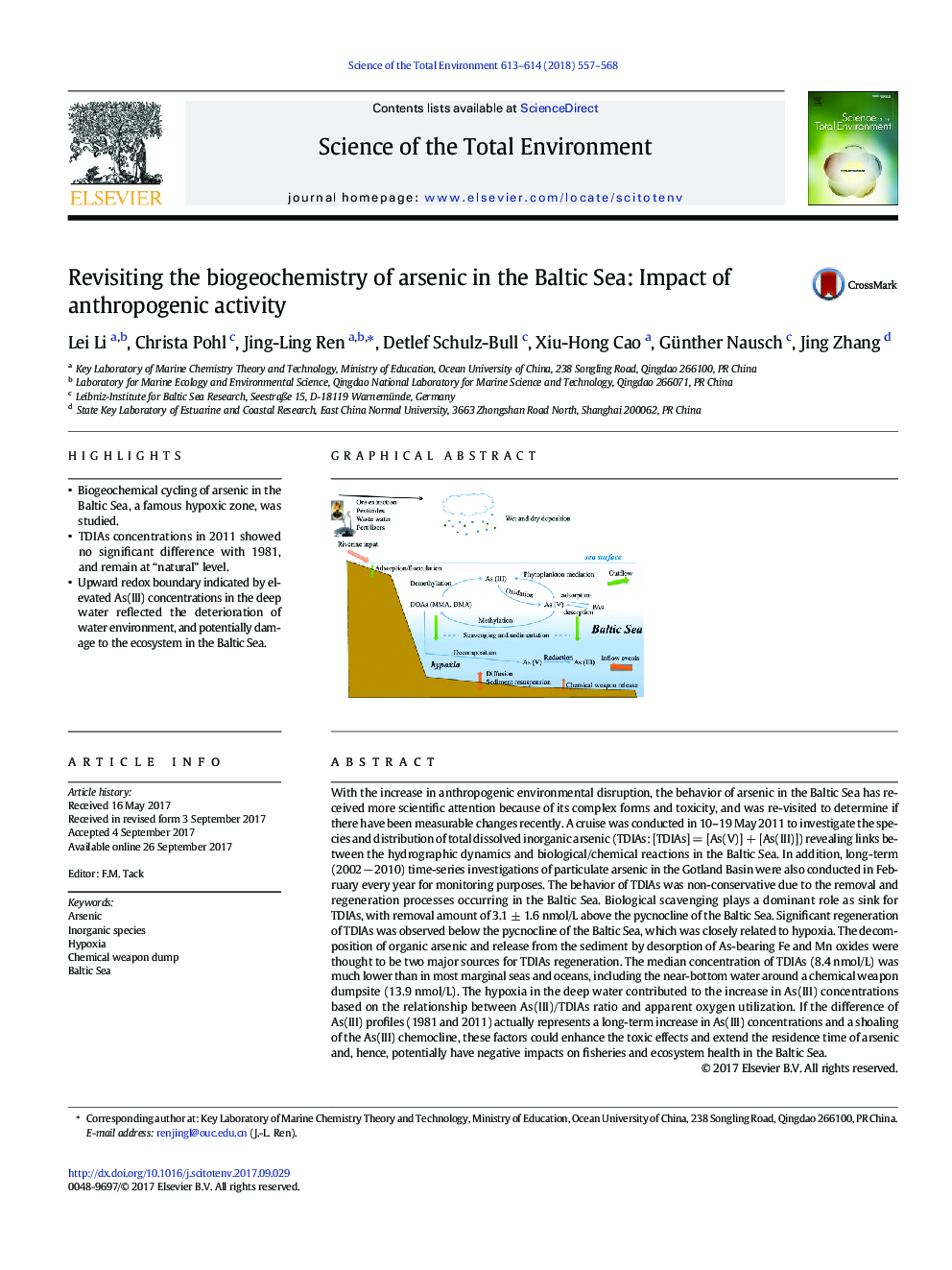| کد مقاله | کد نشریه | سال انتشار | مقاله انگلیسی | نسخه تمام متن |
|---|---|---|---|---|
| 5750119 | 1619690 | 2018 | 12 صفحه PDF | دانلود رایگان |
- Biogeochemical cycling of arsenic in the Baltic Sea, a famous hypoxic zone, was studied.
- TDIAs concentrations in 2011 showed no significant difference with 1981, and remain at “natural” level.
- Upward redox boundary indicated by elevated As(III) concentrations in the deep water reflected the deterioration of water environment, and potentially damage to the ecosystem in the Baltic Sea.
With the increase in anthropogenic environmental disruption, the behavior of arsenic in the Baltic Sea has received more scientific attention because of its complex forms and toxicity, and was re-visited to determine if there have been measurable changes recently. A cruise was conducted in 10-19 May 2011 to investigate the species and distribution of total dissolved inorganic arsenic (TDIAs: [TDIAs] = [As(V)] + [As(III)]) revealing links between the hydrographic dynamics and biological/chemical reactions in the Baltic Sea. In addition, long-term (2002 â 2010) time-series investigations of particulate arsenic in the Gotland Basin were also conducted in February every year for monitoring purposes. The behavior of TDIAs was non-conservative due to the removal and regeneration processes occurring in the Baltic Sea. Biological scavenging plays a dominant role as sink for TDIAs, with removal amount of 3.1 ± 1.6 nmol/L above the pycnocline of the Baltic Sea. Significant regeneration of TDIAs was observed below the pycnocline of the Baltic Sea, which was closely related to hypoxia. The decomposition of organic arsenic and release from the sediment by desorption of As-bearing Fe and Mn oxides were thought to be two major sources for TDIAs regeneration. The median concentration of TDIAs (8.4 nmol/L) was much lower than in most marginal seas and oceans, including the near-bottom water around a chemical weapon dumpsite (13.9 nmol/L). The hypoxia in the deep water contributed to the increase in As(III) concentrations based on the relationship between As(III)/TDIAs ratio and apparent oxygen utilization. If the difference of As(III) profiles (1981 and 2011) actually represents a long-term increase in As(III) concentrations and a shoaling of the As(III) chemocline, these factors could enhance the toxic effects and extend the residence time of arsenic and, hence, potentially have negative impacts on fisheries and ecosystem health in the Baltic Sea.
158
Journal: Science of The Total Environment - Volumes 613â614, 1 February 2018, Pages 557-568
